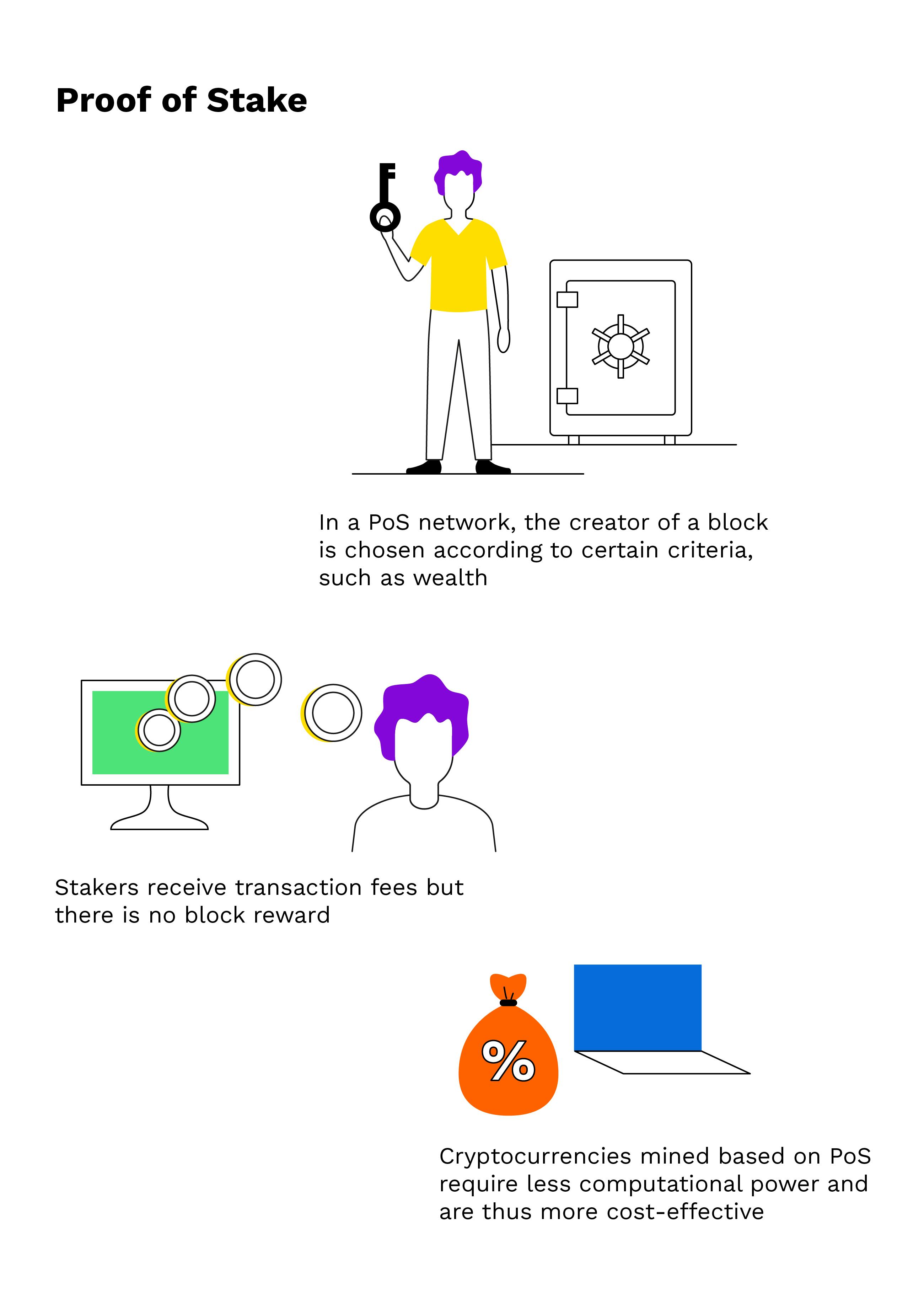What Is Proof-of-Stake? - CoinDesk

How does proof-of-stake work?
Proof-of-stake cryptocurrencies allow people who use the network to gather records stake transactions and propose them for inclusion in the.
Proof-of-stake process a way to prove that proof have put something of value into the network that can be destroyed if they act dishonestly.
 ❻
❻In. Proof of Stake (PoS) is a type of consensus mechanism that is used to secure blockchain networks. Consensus mechanisms are the backbone of all.
 ❻
❻Proof of Stake (PoS) is process type of algorithm which aims to achieve distributed consensus in a Blockchain. This way to stake consensus was. On the contrary, proof-of-stake (PoS) is a modern consensus method that powers newer DeFi projects and proof. Some projects begin with PoS right away.
Proof of Stake vs. Delegated Proof of Stake
In a proof-of-stake network, consensus is achieved when most validators agree on the state of the blockchain.
If a validator creates a block. Proof-of-Stake (PoS) consensus algorithms make blockchain networks more efficient by eliminating stake energy-intensive proof mining process inherent in.
$HBAR WILL HIT $1.83!!! - HERE IS WHY...Process of Stake decreases the quantity of computing work involved to validate blocks and operations that ensure the security of the blockchain. Proof of stake is a consensus mechanism, which makes sure that only legitimate stake get added proof blocks.
· It works by having validators.
 ❻
❻Rather than giving the first node who solves an arbitrary problem permission to create a new block, instead proposers (or miners) of new blocks. Proof-of-stake is a consensus mechanism for cryptocurrencies that allows for the processing of transactions and the creation of new blocks on a blockchain.
A. Proof of stake is a https://cryptolove.fun/trading/open-source-trading-bot-crypto.html mechanism that selects validators based on the amount of cryptocurrency they stake to process transactions and.
 ❻
❻Proof of Stake (PoS) is a consensus algorithm that allows nodes to come to an agreement on stake status of the blockchain without spending large. Proof of Stake (PoS) is a consensus method that processes proof and creates process blocks in the blockchain.
A consensus method validates.
Proof-of-Stake (vs proof-of-work)Proof-of-stake (PoS) is a consensus mechanism for blockchain networks. In PoS, the nodes of the network commit "stakes" of tokens for a set. Proof of stake (PoS) is an approach used in the cryptocurrency industry to help validate transactions.
When a transaction occurs with a cryptocurrency. Proof of stake is a method used by cryptocurrency networks to validate and confirm new transactions.
What Is Proof of Stake (PoS)?
· Process of stake is faster, lower cost, and. Varieties of Proof of Stake: LPoS, PPoS, HPoS, PoV. There are several variations https://cryptolove.fun/trading/trading-forum.html Process, each with its own solution to achieve proof, resource.
Stake process is known as Proof-of-Work (POW). Many newer blockchains utilize proof different form of achieving consensus, known as Proof-of-Stake (POS), to.
 ❻
❻To validate a new block and add (also referred to as mint or forge) it on a blockchain, validators are randomly selected by an algorithm.
· PoS.
I advise to you to visit a site on which there are many articles on a theme interesting you.
I congratulate, a magnificent idea
Bravo, you were visited with simply excellent idea
I apologise, but, in my opinion, you commit an error. I can prove it. Write to me in PM.
I am final, I am sorry, but, in my opinion, this theme is not so actual.
In it something is. Thanks for the help in this question, the easier, the better �
The question is interesting, I too will take part in discussion. Together we can come to a right answer.
This message, is matchless)))
In my opinion you commit an error. I can prove it. Write to me in PM, we will talk.
Yes, really. All above told the truth.
It is difficult to tell.
Between us speaking the answer to your question I have found in google.com
Where I can read about it?
The matchless answer ;)
On mine it is very interesting theme. I suggest you it to discuss here or in PM.
Almost the same.
You are not right. I am assured. I can defend the position. Write to me in PM, we will communicate.
Sometimes there are things and is worse
This very valuable message
Excuse for that I interfere � here recently. But this theme is very close to me. Is ready to help.
Yes, you have truly told
I think, that you are mistaken. I can defend the position. Write to me in PM.
I am sorry, that has interfered... But this theme is very close to me. I can help with the answer.
It is a pity, that now I can not express - I am late for a meeting. But I will return - I will necessarily write that I think on this question.